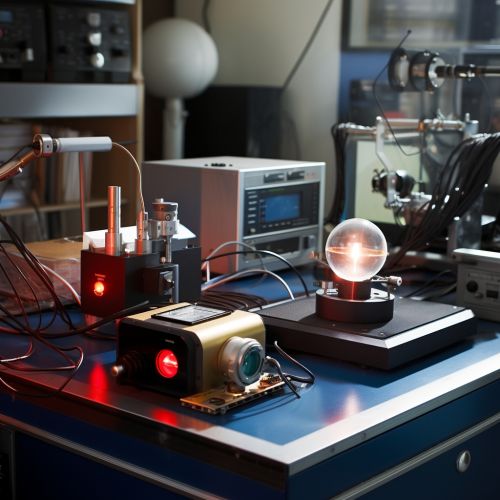Spectrometer
Introduction
A spectrometer is a scientific instrument used to separate and measure spectral components of a physical phenomenon. Spectrometer is a broad term often used to describe instruments that measure a continuous variable of a phenomenon where the spectral components are somehow mixed. In visible light, these components are colors such as red and blue.
History
The concept of a spectrometer now covers instruments that do not examine light but instead examine particles such as electrons, protons, and ions. The device is an integral part of spectroscopy methods of analysis and monitoring. Newton first used the term spectrum in his study of optics, but the term did not become popular until the 19th century when it was applied to the identification of materials through the analysis of their spectra.
Types of Spectrometers
There are several types of spectrometers, each with its unique characteristics and applications.
Optical Spectrometers
Optical spectrometers, also known as light spectrometers, operate over the optical spectrum from ultraviolet light, through visible light, and into the infrared. They are used in many scientific fields including physics, chemistry, and astronomy.
Mass Spectrometers
Mass spectrometers are used to analyze the mass-to-charge ratio of charged particles. This information can be used to determine the chemical structure of a substance, the isotopic composition of a sample, or the identity of a compound.
Time-of-Flight (TOF) Spectrometers
Time-of-Flight (TOF) spectrometers are designed to measure the time it takes for a particle to travel a specific distance. This type of spectrometer is often used in mass spectrometry and laser-induced breakdown spectroscopy.
Fourier Transform Spectrometers
Fourier Transform spectrometers are based on the principle of interference and are used to obtain the spectrum of a source of light.
Working Principle
A spectrometer works by dispersing light into its different color components and then measuring their intensities. The light source is directed into a monochromator, dispersed into its spectrum, and then analyzed by the detector. The detector measures the intensity of the light and converts it into an electrical signal that can be interpreted by a computer.
Applications
Spectrometers have a wide range of applications in various fields.
In Chemistry
In chemistry, spectrometers are used in the analysis of chemical substances. The spectrometer can determine the elements or compounds present in a sample by analyzing the spectrum of the sample.
In Physics
In physics, spectrometers are used to study the properties of light and other electromagnetic waves. They can also be used to study the interaction of light with matter.
In Astronomy
In astronomy, spectrometers are used to analyze the light from stars and other celestial bodies. This can provide information about the composition, temperature, and velocity of these objects.
See Also


